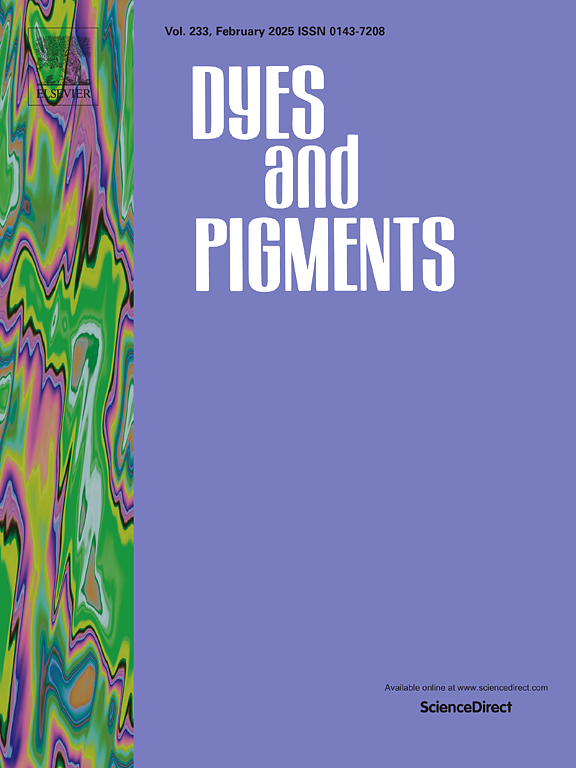N,O-boron spirocyclic complexes: How electronic and spatial factors modulate photophysical and physicochemical properties
IF 4.1
3区 工程技术
Q2 CHEMISTRY, APPLIED
引用次数: 0
Abstract
This study presents the synthesis of new spirocyclic boron-coordinated (SBCs) fluorophores based on a simple and facile procedure and their optical properties. The structure of the complexes was confirmed by 1H, 13C, 11B NMR spectra, high resolution mass spectra and single crystal X-ray diffraction data. The effect of the substituents in the terminal aromatic cycles and the spirocycle size on the photophysical properties was investigated by a combined experimental and computational approach. The absorption and fluorescence emission properties of the SBCs were investigated and the results obtained revealed evident relationships between the electronic nature of the substituents and their photophysical properties. These differences clearly divide the spirocomplexes into two groups with significant differences in absorption and emission properties. SBCs with an electron acceptor substituent in cycle A and an electron donor substituent in cycle B have an emission maximum in the shorter wavelength region (416–451 nm) and a quantum yield of 2.3–12.5 %. In another group of compounds with the opposite set of substituents in cycles A and B, the emission maximum is located at 469–560 nm, the quantum yield is much lower (0.1–0.4 %), but the Stokes shift (8114-8160 cm−1) increases significantly. These differences were explained using state-of-the-art quantum chemical calculations, which show that SBCs differ in the values of the electronic charges transferred in ESs (S1v and S1r) and their localisation, and have different conjugated systems. SBCs exhibited increased quantum yield with increasing medium viscosity, under mycelial formation conditions, and significant aggregation-enhanced emission behaviour in THF-H2O and DMSO-H2O mixtures, along with excellent solid-state photophysical properties. Cellular uptake and cytotoxicity studies using Vero cells showed that SBCs are biocompatible and selectively accumulate in cell lipid droplets, endoplasmic reticulum, Golgi apparatus and mitochondria.

求助全文
约1分钟内获得全文
求助全文
来源期刊

Dyes and Pigments
工程技术-材料科学:纺织
CiteScore
8.20
自引率
13.30%
发文量
933
审稿时长
33 days
期刊介绍:
Dyes and Pigments covers the scientific and technical aspects of the chemistry and physics of dyes, pigments and their intermediates. Emphasis is placed on the properties of the colouring matters themselves rather than on their applications or the system in which they may be applied.
Thus the journal accepts research and review papers on the synthesis of dyes, pigments and intermediates, their physical or chemical properties, e.g. spectroscopic, surface, solution or solid state characteristics, the physical aspects of their preparation, e.g. precipitation, nucleation and growth, crystal formation, liquid crystalline characteristics, their photochemical, ecological or biological properties and the relationship between colour and chemical constitution. However, papers are considered which deal with the more fundamental aspects of colourant application and of the interactions of colourants with substrates or media.
The journal will interest a wide variety of workers in a range of disciplines whose work involves dyes, pigments and their intermediates, and provides a platform for investigators with common interests but diverse fields of activity such as cosmetics, reprographics, dye and pigment synthesis, medical research, polymers, etc.
 求助内容:
求助内容: 应助结果提醒方式:
应助结果提醒方式:


